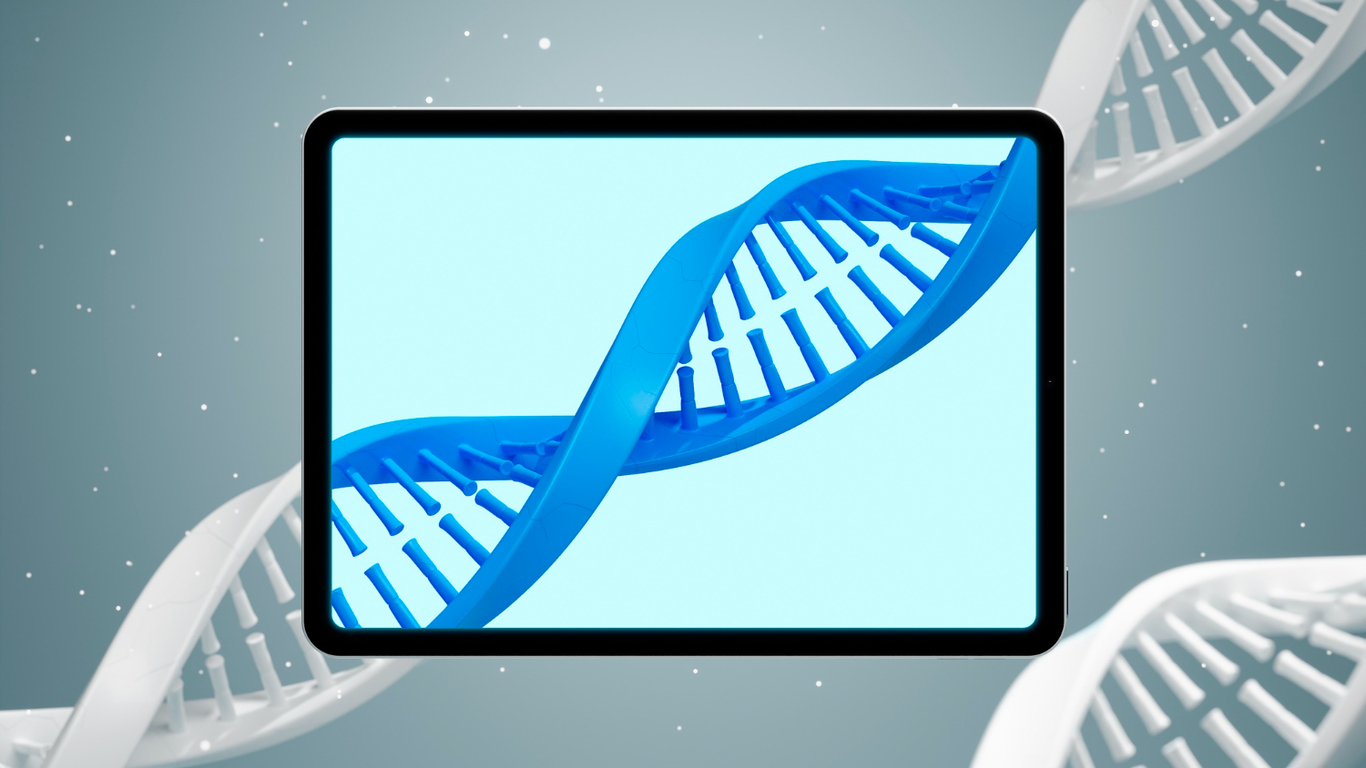DNA Methylation: What It Is and Why It Matters

In genetics, one of the most fascinating processes that regulate gene expression and play a critical role in health and disease is known as DNA methylation. This chemical modification of DNA has significant implications for understanding everything from developmental biology to cancer research. In this article, Labex will delve into what DNA methylation is, how it works, its biological significance, and why it matters in various health and science fields.
What is DNA Methylation?
DNA methylation is a biochemical process where a methyl group (CH3) is added to the DNA molecule, typically at the cytosine base in a cytosine-guanine dinucleotide (CpG) sequence. This modification does not change the original DNA sequence but can significantly alter gene expression by affecting the transcriptional activity of certain genes.
The methylation process mainly occurs in regions of the DNA known as CpG islands, which are stretches of DNA with a high frequency of CpG sites. These regions are often located near gene promoters—the sections of DNA that initiate gene transcription—making methylation an influential factor in turning genes on or off.
The Mechanism Behind DNA Methylation

It’s important to look at the mechanism of adding methyl groups to DNA to understand how DNA methylation functions. This process is primarily facilitated by a family of enzymes known as DNA methyltransferases (DNMTs). These enzymes transfer a methyl group from S-adenosylmethionine (SAM), a universal methyl donor, to the 5-carbon position of the cytosine ring in a CpG sequence, resulting in 5-methylcytosine.
The outcome of this addition can either activate or suppress gene expression. Generally, when a gene’s promoter is heavily methylated, the gene is silenced or less likely to be expressed. Conversely, hypomethylation (low levels of methylation) in promoter regions can result in increased gene expression.
Why DNA Methylation Matters in Biology
DNA methylation is a key epigenetic mechanism—a form of genetic regulation that doesn’t change the DNA sequence but affects how cells read the genes. Epigenetic changes can be influenced by various factors, including environment, diet, and lifestyle, and are essential for regulating normal cellular processes.
Here are some reasons why DNA methylation is crucial in biological systems:
Embryonic Development: During development, cells undergo differentiation, where they specialize into different types, such as muscle cells, nerve cells, and skin cells. DNA methylation is vital in this process as it helps establish and maintain the identity of these cells by controlling gene expression patterns specific to each cell type.
X-Chromosome Inactivation: In females, one of the two X chromosomes is randomly inactivated during early embryonic development. DNA methylation plays a crucial role in this process, ensuring that only one X chromosome remains active, thereby balancing gene dosage between males and females.
Genomic Imprinting: This is a phenomenon where certain genes are expressed in a parent-of-origin-specific manner. DNA methylation marks set during gametogenesis (sperm and egg formation) dictate which copy of a gene will be active based on whether it was inherited from the mother or the father. This process is essential for normal growth and development.
Immune Response Regulation: DNA methylation helps regulate the immune system by controlling the expression of genes involved in immune responses. Aberrant methylation patterns can lead to immune system dysfunction, contributing to autoimmune diseases and other conditions.
DNA Methylation and Disease
Abnormal DNA methylation patterns are associated with various diseases, including cancer, cardiovascular diseases, and neurological disorders. Understanding these patterns can offer insights into disease mechanisms and potential therapeutic strategies.
1. Cancer
One of the most extensively studied areas concerning DNA methylation is its role in cancer. Aberrant methylation patterns, such as hypermethylation (excessive methylation) or hypomethylation, can disrupt the normal regulation of gene expression and contribute to tumorigenesis.
Hypermethylation in Tumor Suppressor Genes: In cancer cells, certain tumor suppressor genes may become hypermethylated, leading to their silencing. These genes usually help control cell growth and division, so when they are inactivated, the risk of unchecked cellular proliferation and cancer increases.
Global Hypomethylation: On the other hand, cancer cells often exhibit global hypomethylation, which can lead to genomic instability and the activation of oncogenes—genes that promote cancer.
Research into cancer epigenetics has led to the development of drugs targeting DNA methylation. For instance, DNMT inhibitors like azacitidine and decitabine are used to treat certain blood cancers by demethylating DNA and reactivating silenced tumor suppressor genes.
2. Neurological Disorders
DNA methylation also plays a significant role in the functioning of the nervous system. Abnormal methylation patterns have been linked to a variety of neurological and psychiatric conditions, including Alzheimer’s disease, schizophrenia, and autism.
Alzheimer’s Disease: In Alzheimer’s, there is evidence that altered DNA methylation patterns may affect genes involved in amyloid plaque formation and other pathogenic processes. Investigating these changes could potentially lead to new biomarkers for early diagnosis and therapeutic targets.
Autism Spectrum Disorders (ASD): Research has suggested that environmental factors influencing DNA methylation may play a role in the development of ASD. Studying these epigenetic changes could help identify risk factors and pave the way for early interventions.
3. Cardiovascular Diseases
DNA methylation is involved in regulating genes associated with heart disease. Abnormal methylation in genes that control blood pressure, lipid metabolism, and inflammation can contribute to cardiovascular conditions. Exploring these methylation patterns may help in understanding the genetic risk factors for heart disease and lead to better prevention strategies.
Environmental Influence on DNA Methylation

Epigenetics is a field that underscores the interaction between genes and the environment. DNA methylation, as a key epigenetic modification, is influenced by various environmental factors, such as:
Diet: Nutrients like folate, vitamin B12, and methionine serve as methyl donors for DNA methylation processes. Deficiencies or excesses of these nutrients can affect methylation patterns and potentially lead to disease.
Toxins and Chemicals: Exposure to certain chemicals, such as tobacco smoke, heavy metals, and pesticides, has been linked to changes in DNA methylation patterns, which may increase the risk of cancer and other diseases.
Stress and Lifestyle Factors: Chronic stress and lifestyle choices like physical activity levels can also influence DNA methylation. For example, stress-induced changes in methylation have been observed in genes associated with mood regulation, potentially impacting mental health.
The Future of DNA Methylation Research
As the understanding of DNA methylation expands, it has opened new frontiers in personalized medicine, diagnostics, and therapeutic interventions. Here are some promising areas for future research and application:
Epigenetic Biomarkers for Disease Detection
Researchers are investigating how DNA methylation patterns can be used as biomarkers for early detection of diseases such as cancer. By identifying specific methylation signatures, it may become possible to detect the presence of a tumor before symptoms appear, allowing for earlier and more effective treatment.
Epigenetic Therapy
Epigenetic drugs, such as DNMT inhibitors, offer a new class of treatments that aim to reverse abnormal methylation patterns. Ongoing research seeks to refine these therapies to make them more targeted, minimizing side effects and improving their efficacy.
Gene Editing and DNA Methylation
With advances in gene editing technologies like CRISPR/Cas9, scientists are exploring ways to modify DNA methylation directly to correct aberrant patterns associated with diseases. This could potentially lead to novel treatments for conditions that are currently difficult to manage.
Conclusion
DNA methylation is a fundamental epigenetic modification that plays a vital role in regulating gene expression and maintaining cellular function. Its influence extends from normal biological processes, such as development and immune response, to the pathogenesis of various diseases, including cancer and neurological disorders.
The study of DNA methylation not only provides valuable insights into the mechanisms underlying health and disease but also offers exciting opportunities for advancements in diagnostics and therapies. As research continues, DNA methylation could revolutionize the way we understand and treat genetic and epigenetic disorders.
Whether it’s through developing new cancer therapies, exploring epigenetic influences on mental health, or discovering biomarkers for early disease detection, the implications of DNA methylation are profound. This process holds the key to unlocking many mysteries in biology, paving the way for a future where medicine is increasingly personalized and precisely targeted.
